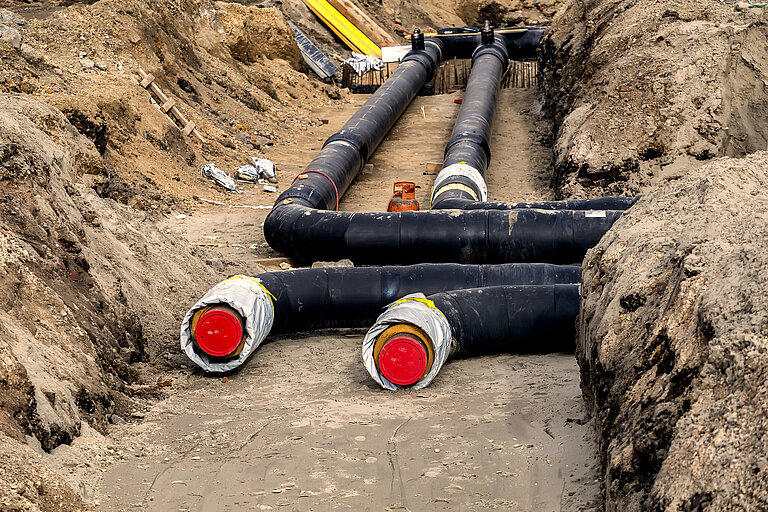AIRE

Compliance with climate protection targets requires a change in the energy supply of our society from the still dominant use of fossil fuels to a largely greenhouse gas-neutral system. In this context, infrastructure adaptation is also necessary, which goes hand in hand with regionally different expansion, conversion or deconstruction strategies.
Some fundamental lines of development are already emerging today. Electricity distribution and transmission grids must be adapted to increasing shares of fluctuating renewable energy (RE) feed-in and new customers. These include charging stations for electric vehicles or heat pumps for supplying buildings with space heating and hot water or power-to-heat systems in district heating. District heating networks are faced with the challenge of decreasing heat densities and with the conversion to largely greenhouse gas-neutral heat generation, while at the same time considering local thermohydraulic parameters to fulfil the supply task. Gas grids can provide flexibility in the energy system through power-to-gas, but in the large consumption sectors of industry, buildings and transport they face the challenge of far-reaching defossilisation.
The long-term design of energy infrastructures is strongly influenced by the interplay of overriding technological development paths such as politically motivated power-to-gas or offshore wind expansion strategies, factors such as the current infrastructure stock, demographic development or regional renewable energy potentials.
In this project, various long-term energy scenarios of the development towards a largely greenhouse neutral energy and economic system (95 % scenarios) are used at the federal level. A spatially differentiated modelling of the infrastructures as a key element between energy demand and supply then allows to derive the technical and economic requirements for the extension, conversion or deconstruction of energy infrastructures. Ifeu records and describes the existing heat network infrastructures and its subcomponents and, in cooperation with IREES, develops future requirements for the planning and financing of heat networks. With the heat atlas, a spatially high-resolution modelling of the heat demand development, a localisation of heat network infrastructures and the regionalisation of electricity loads through the use of heat pumps is carried out.
Runtime
Project start October 2018
Client
Federal Ministry for Economic Affairs and Energy
Partner
Consentec GmbH (Koordinator)
Fraunhofer-Institut für System- und Innovationsforschung (ISI) (Koordinator)
Institut für Ressourceneffizienz und Energiestrategien IREES GmbH
Technische Universität Berlin
DVGW-Forschungsstelle am Engler-Bunte-Institut des KIT
Institut für Katalyseforschung und -technologie (IKFT) des KIT
Institut für Klimaschutz, Energie und Mobilität e.V. (IKEM)
Stiftung Umweltenergierecht (SUER)
